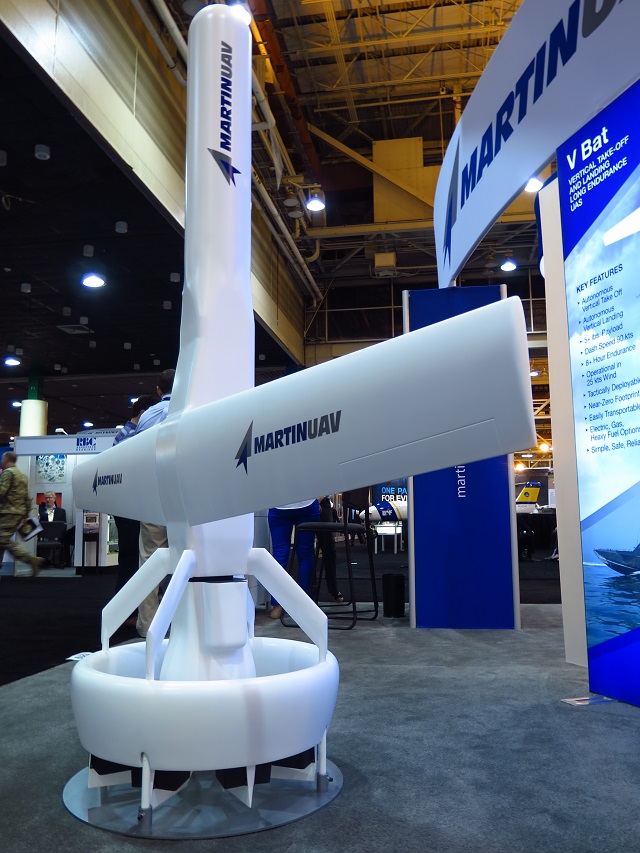Martin UAV has completed development of the autonomous flight control system for its V-Bat vertical take-off and landing unmanned air vehicle, which will lead to a series of customer flight demonstrations in summer and further testing for the US Navy.
The MLB Company design has been in development for some years, but was able to enter the final stages of completion when the company was acquired by Martin in 2015. This, plus a boost in funding from the US Air Force’s Research Laboratory in 2011, has led to the V-Bat now having the autonomous flight controls to allow the vertical take-off UAV to transition automatically into horizontal flight.
The UAV is suited to ship-based operations due to its small footprint, and deploys vertically using its vectored thrust tail fan. Two variants are available, an electric system and a heavy fuel variant.

Martin UAV V-Bat
James Drew/Flightglobal
Hirth is providing the fuel-injection heavy engine for the planned military variants, and deliveries of these are expected in late May ahead of integration into the aircraft.
The V-Bat is contracted under a cooperative research and development agreement with the US Navy for research into operating the electric and combustion design, a deal for which was signed in late 2015.
The USN is looking to test both the engine and electric designs, and is currently testing the latter as the former completes development. Four prototypes have been developed to date, and the combustion examples currently use gasoline two-stroke engines.
A series of demonstrations are planned for this summer, and production is expected to begin in the next 9-12 months.
The company believes it has identified a gap in the market through the low footprint of the system - it does not require a launcher or recovery system - and the open platform that can be tailored to customer needs.
“This is a privately-held company that can configure payload options for customers’ requirements easily, unlike other large defence service providers,” Phil Jones, chief operating office of Martin UAV says.
The system can operate for some 10h in horizontal mode, and has advantages over other dual-mode systems such as tiltrotors and hybrid systems, according to Stephen Morris, chief technology officer and creator of the system. This is because there is no drag and weight from the extra rotors.
“We don’t have two independent systems that need their own fuel supply as others do,” he adds.
Source: FlightGlobal.com



















